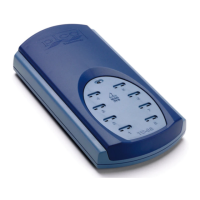Technical reference
38
© 2005 Pico Technology Limited. All rights reserved.
USBTC08044-2
A device consisting of two dissimilar metals joined together. The thermoelectric voltage
developed between the two junctions is proportional to the temperature difference
Type B thermocouples are made from platinum and rhodium and are suitable for high
temperature measurements of up to 1820°C. Unusually, due to the shape of their
temperature / voltage curve, type B thermocouples give the same output at 0°C as at
Type E thermocouples are made from chromel and constantan. They have a high output
(68 uV/°C), making them well suited to low-temperature (cryogenic) use. They are non-
Type J thermocouples are made from iron and constantan. They measure temperatures
in the range -210 to +1200°C. The main application is with old equipment that can not
accept the more modern thermocouple. J types should not be used above 760°C, as an
abrupt magnetic transformation will cause permanent decalibration.
Type K thermocouples are low-cost, general-purpose thermocouples, made from chromel
and alumel, operating in the -270°C to +1370°C temperature range. Sensitivity is approx
Type N thermocouples are made from nicrosil and nisil. The high stability and resistance
to high-temperature oxidation of these thermocouples make them suitable for measuring
high temperatures. They are less expensive than platinum types B,R, and S and were
designed to be an improved type K.
Type R thermocouples are made from platinum and rhodium, and are suitable for high-
temperature measurements of up to 1760°C. Low sensitivity (10 uV/°C) and high cost
make them unsuitable for general purpose use.
Type S thermocouples are made from platinum and rhodium, and are suitable for high-
temperature measurements of up to 1760°C. Low sensitivity (10 uV/vC) and high cost
make these thermocouples unsuitable for general purpose use. Due to their high stability,
type S thermocouples are used as the standard of calibration for the melting point of gold.
Type T thermocouples are made from copper and constantan, are highly accurate, and
operate in the -270°C to +400°C temperature range.

